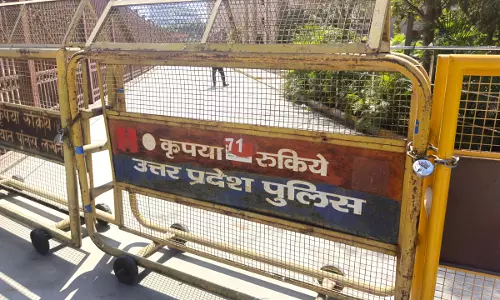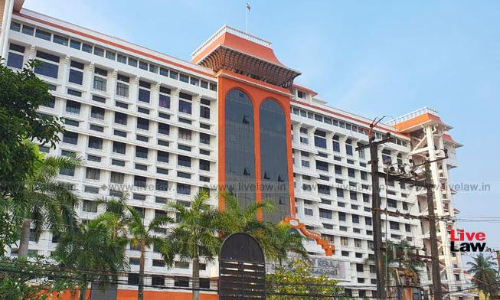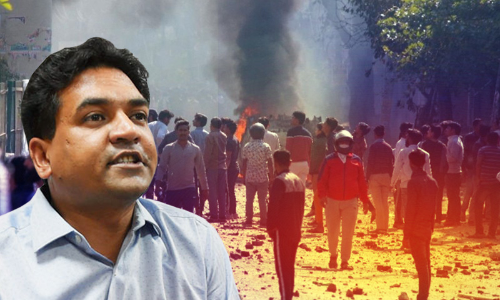NGT Appoints 2-Member Monitoring Committee To Implement Its Yamuna Revitalization Directions [Read Order]
![NGT Appoints 2-Member Monitoring Committee To Implement Its Yamuna Revitalization Directions [Read Order] NGT Appoints 2-Member Monitoring Committee To Implement Its Yamuna Revitalization Directions [Read Order]](https://www.livelaw.in/cms/wp-content/uploads/2017/07/NGT-Green-Tribunal.jpg)
The National Green Tribunal (NGT) on Thursday constituted a two-member committee to look into the implementation of various directions passed by it in 2015 to revitalize Yamuna river in Delhi.The tribunal appointed retired expert member Bikran Singh Sajwan and former Delhi Chief Secretary Shailja Chandra as members of the monitoring committee that would take stock of all steps taken, so far,...
The National Green Tribunal (NGT) on Thursday constituted a two-member committee to look into the implementation of various directions passed by it in 2015 to revitalize Yamuna river in Delhi.
The tribunal appointed retired expert member Bikran Singh Sajwan and former Delhi Chief Secretary Shailja Chandra as members of the monitoring committee that would take stock of all steps taken, so far, by government agencies, pursuant to the judgment passed by it in Manoj Misra case, on January 13, 2015, on the cleaning and restoration of Yamuna River.
Noting that there was a clear failure on part of various agencies in handling the situation of Yamuna, the tribunal felt that there was, undoubtedly, constant need for a monitoring committee to function as an authority of the tribunal under Section 25 of the National Green Tribunal Act, 2010.
Under Section 25 of the Act, an award or order or decision of the tribunal shall be executable by it as a decree of a civil court and for this purpose, the tribunal shall have all the powers of a civil court.
The committee, which could periodically, summon representatives from all departments, including government, has been asked to prepare an action plan, after looking at the ground realities, by September 15.
The committee has been conferred the power to inspect sites as may be necessary, including analyzing the water quality. It may also call for security for removing encroachments from the floodplains of Yamuna River.
One of the main mandates of the panel would be to ensure a particular level of standards of water at the entry and exit points of Yamuna in Delhi and the drains falling into it. The panel would ensure that no pollutants enter into the river besides looking into the beautification of the banks of Yamuna.
The tribunal also asked the committee to ensure that treated effluents does not mix with the untreated ones, apart from supervising the requisitioning of funds by Delhi Development Authority (DDA) and the plan of developing a biodiversity park.
The panel has been asked to submit its first interim report by December 31.
Members of the principal committee constituted by the NGT vide its January 13, 2015 judgment, the Haryana and Uttar Pradesh governments, Secretary of the Public Works Department, Vice-Chairman of the DDA, the Commissioners of all Municipal Corporations of Delhi and the Chairman of the New Delhi Municipal Council and National Mission for Clean Ganga have been asked to cooperate with the new panel that would assume charge within a week.
In case of any conflict with the views of agencies, the monitoring committee may inform the tribunal. The panel may also give suggestions to the Haryana government after considering the status report to be filed by it within a week.
The directions came on the second consecutive day of hearing several matters related to Yamuna cleaning. On Wednesday, the tribunal noted that none of the agencies had taken effective steps in terms of its judgment.
“Inspite of repeated directions in the last more than three years there is no meaningful progress at the ground level. It is undisputed that the work for 14 STPs (sewage treatment plants) has not even begun at site. We do not find any justification for this lapse,” a bench, comprising Chairperson Adarsh Kumar Goel, Justice SP Wangdi and expert member Nagin Nanda, said, while asking the CEO of Delhi Jal Board (DJB) to appoint a suitable officer to ensure commencement of the work on 14 STPs on or before December 1.
The environment tribunal also directed the Haryana government to state in an affidavit as to what steps it has taken or propose to take for complying with its earlier directions so that no untreated pollutants enter the Najafgarh drain (one of the most polluted drains in the capital).
In its January 13, 2015 judgment, the NGT, while terming the rejuvenation plan as ‘Maily Se Nirmal Yamuna’ Revitalization Project 2017 (since the project was to be completed by March 31, 2017), directed the DJB and the concerned corporations to make STPs under their respective jurisdiction fully functional within two weeks and construct/install 32 new STPs of requisite capacities in a time-bound manner.
The tribunal had also directed installation of common effluent treatment plants at all industrial clusters in Delhi, besides asking the DDA to prepare floodplain maps of entire Yamuna segment in Delhi, while imposing complete prohibition of any constructed activity in the demarcated floodplains. The authorities were directed to report to the principal committee constituted through the same judgment.
Manoj Misra, convener of Yamuna Jiye Abhiyan, a river conservation group, and the applicant in the case, said, “Nothing at all has been done by agencies for restoration of Yamuna during these last two and half years, since the NGT’s judgment. Instead, they have been making misleading statements before the court. At one moment, they say it has not been done at the other moment, they say they have done something, until the court finally sensed it.”
“Further, pollution is the only aspect the court is considering whereas ecological flows and flood plain restoration are also equally important for reviving Yamuna, which has also been directed in the judgment. Hope, the monitoring committee looks into these aspects also,” Misra added.
Read the Order Here




